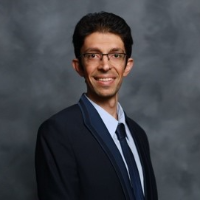3rd Global Summit on
Heart and Cardiovascular Care
November 26-27, 2026 | Dubai, UAE

Heart Congress 2026

Loma Linda University, USA
Abstract:
Background: Heart failure (HF) is still associated with significant mortality rates, and utilizing simpleprognostic tools is crucial. This study aims to assess the impact of the shock index (SI) and its derivatives,including age SI (ASI), modified SI (MSI), and age MSI (AMSI), on clinical outcomes in patients withHF.Methods: We systematically investigated PubMed/Medline, Scopus, and Web of Science databases withno restrictions on time or language up to February 2024. Any relevant records evaluating the associationof SI, ASI, MSI, and MSI with clinical outcomes in HF subjects were included for downstream datasynthesis.Results: Eight records were selected (age: 69.44±15.05 years). Mean SI in those records reportedmortality (either in-hospital or long-term death) was 0.67 (95% confidence interval (CI): 0.63-0.72). In-hospital and follow-up mortality rates in seven (n=12955) and three (n=5253) enrolled records were6.18% and 10.14% with mean SI of 0.68 (95%CI: 0.63-0.73) and 0.72 (95%CI: 0.62-0.81), respectively.Deceased patients had higher SI values compared to those who survived (standard mean difference: 0.30,95%CI: 0.06-0.53, P=0.012). Increased SI was associated with higher chances of in-hospital mortality(odds ratio (OR): 1.93, 95%CI: 1.30-2.85, P=0.001). The rate of in-hospital death based on ASI was26.12% (mean ASI: 47.49, 95%CI: 44.73-50.25) and significant difference was found between death andalive subgroups (0.48, 95%CI: 0.39-0.57, P<0.001). Also, this index was found as an independent in-hospital mortality predictor (OR: 2.54, 95%CI: 2.04-3.16, P<0.001). We also found significant differencein terms of MSI (mean: 0.93, 95%CI: 0.88-0.98) between deceased and alive patients (0.34, 95%CI:0.05–0.63, P=0.021) (Figure 1).Conclusions: This study indicates SI, ASI, and MSI are simple and reliable tools and can be used at thebedside to assess prognosis and individualize therapy in high-risk patients with HF.
Biography:
Mehrbod Vakhshoori completed his MD at Isfahan University of Medical Sciences (IUMS),
Isfahan, Iran. He was the postdoctoral research fellow at heart failure research center, affiliated
to IUMS, for more than 5 years. He is currently a postdoctoral research fellow at Loma Linda
University, California, USA. His research interest mainly focuses on cardiovascular diseases.
Mehrbod has currently published more than 50 articles and has been invited by several medical
journals to review more than 40 manuscripts. He is also the editorial board member of PLOS
ONE journal, one of the well-known journals in medicine field.
